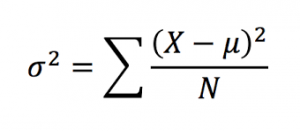Basic Concepts of Set Theory
Symbols and Terminology
A set is a collection of objects of values that are in this case called elements or members. They can be described using words, lists, or set-builder notation.
- Words: a set of odd numbers less than 6
- Listing: {1,3,5}
- Set-builder notation: {x|x is an odd counting number less than 6}
If a set has no elements, it’s called an empty or null set and its symbol is Ø. Make sure not to write this as {Ø}, because that is technically incorrect.
It is important to make sure that a set is well-defined, meaning that there’s no room for subjective interpretation about whether something belongs in a set or not. An example of a well-defined set is a set of all numbers between 1 and 10. We can say for sure that 5 belongs and 13 doesn’t. A set that is not well defined is a set of all numbers that are aesthetically pleasing. It’s not clear what would define aesthetically pleasing so we’re unsure about whether 5 or 13 would fit. Continue reading

